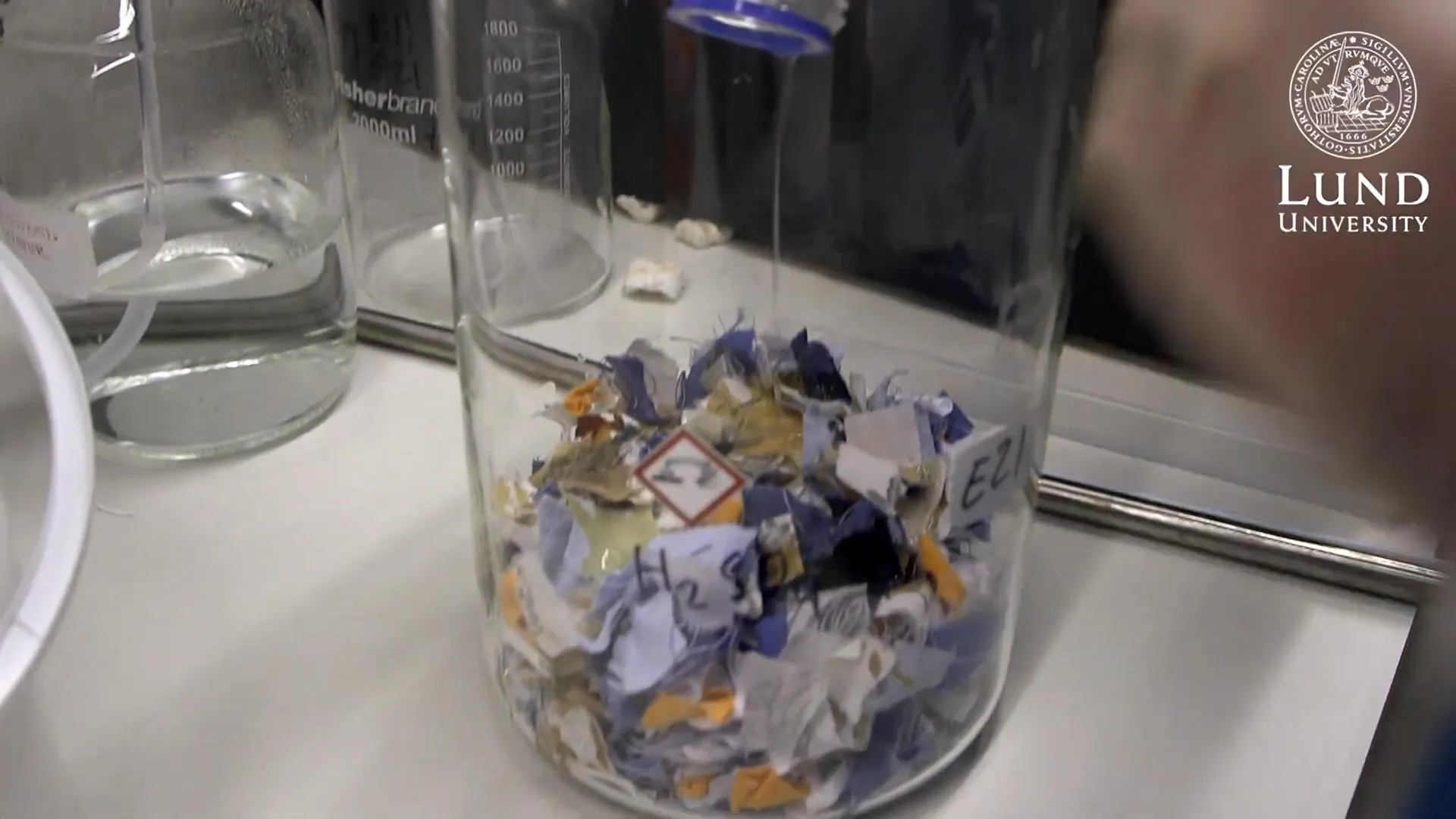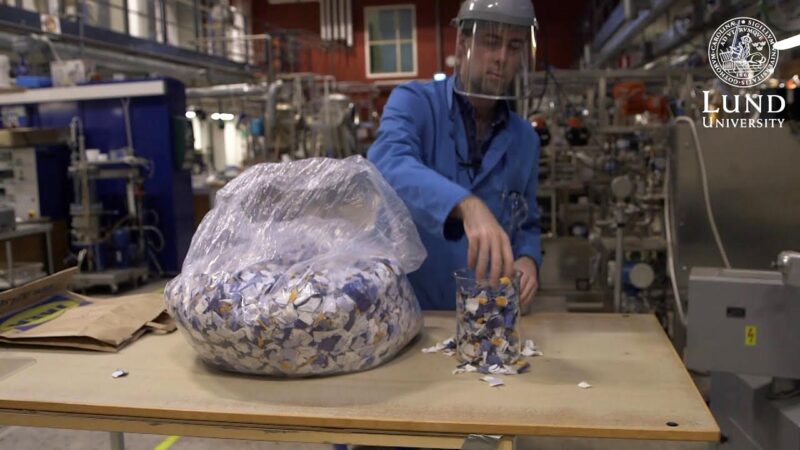
Des chercheurs ont mis au point une méthode qui transforme le coton en sucre, lequel peut ensuite être transformé en spandex, nylon ou éthanol.
Nous sommes nombreux à essayer de recycler nos vieux textiles, mais peu d’entre nous savent qu’ils sont en fait très difficiles à réutiliser et qu’ils finissent souvent dans les décharges de toute façon. Des scientifiques de l’université de Lund, en Suède, ont mis au point une méthode qui transforme le coton en sucre, lequel peut à son tour être transformé en produits de valeur tels que le spandex, le nylon et l’éthanol.
On estime que 25 millions de tonnes de textiles en coton sont jetées chaque année dans le monde. Si l’on additionne les différents types, c’est un total de 100 millions de tonnes de textiles qui sont jetés. En Suède, la plupart de ces matières vont directement dans un incinérateur et deviennent du chauffage urbain. Dans d’autres endroits, c’est encore pire, car les vieux vêtements finissent généralement dans des décharges.
“Si l’on considère que le coton est une ressource renouvelable, cela n’est pas particulièrement efficace sur le plan énergétique”, déclare Edvin Ruuth, chercheur en génie chimique à l’université de Lund.
“Certains tissus ont encore des fibres tellement solides qu’elles peuvent être réutilisées. Cela se fait aujourd’hui et pourrait se faire encore plus à l’avenir. Mais une grande partie des tissus mis au rebut ont des fibres trop courtes pour être réutilisées, et tôt ou tard, toutes les fibres de coton deviennent trop courtes pour le processus connu sous le nom de régénération des fibres.”
Là où Edvin Ruuth travaille, au département de génie chimique de Lund, il existe une grande quantité de connaissances accumulées sur l’utilisation de micro-organismes et d’enzymes, entre autres, pour transformer les hydrates de carbone “plus résistants” de la biomasse en molécules plus simples. Cela signifie que tout, des déchets biologiques et de la liqueur noire à la paille et aux copeaux de bois, peut devenir du bioéthanol, du biogaz et des produits chimiques.
Les chercheurs ont également réussi à décomposer la fibre végétale du coton – la cellulose – en composants plus petits. Cependant, aucun micro-organisme ou enzyme n’est impliqué cette fois-ci ; le processus consiste à tremper les tissus dans de l’acide sulfurique acid. The result is a clear, dark, amber-colored sugar solution.
“The secret is to find the right combination of temperature and sulphuric acid concentration,” explains Ruuth, who fine-tuned the ‘recipe’ together with doctoral student Miguel Sanchis-Sebastiá and professor Ola Wallberg.
Glucose is a very flexible molecule and has many potential uses, according to Ruuth.
“Our plan is to produce chemicals which in turn can become various types of textiles, including spandex and nylon. An alternative use could be to produce ethanol.”
From a normal sheet, they extract five liters of sugar solution, with each liter containing the equivalent of 33 sugar cubes. However, you couldn’t turn the liquid into a soft drink as it also contains corrosive sulphuric acid.
One of the challenges is to overcome the complex structure of cotton cellulose.
“What makes cotton unique is that its cellulose has a high crystallinity. This makes it difficult to break down the chemicals and reuse their components. In addition, there are a lot of surface treatment substances, dyes, and other pollutants which must be removed. And structurally, a terrycloth towel and an old pair of jeans are very different,” says Ruuth.
“Thus it is a very delicate process to find the right concentration of acid, the right number of treatment stages, and temperature.”
The concept of hydrolizing pure cotton is nothing new per se, explains Ruuth; it was discovered in the 1800s. The difficulty has been to make the process effective, economically viable, and attractive.
“Many people who tried ended up not utilizing much of the cotton, while others did better but at an unsustainable cost and environmental impact,” says Ruuth.
When he started making glucose out of fabrics a year ago, the return was a paltry three to four percent. Now he and his colleagues have reached as much as 90 percent.
Once the recipe formulation is complete, it will be both relatively simple and cheap to use.
However, for the process to become a reality, the logistics must work. There is currently no established way of managing and sorting various textiles that are not sent to ordinary clothing donation points.
Fortunately, a recycling center unlike any other in the world is currently under construction in Malmö, where clothing is sorted automatically using a sensor. Some clothing will be donated, rags can be used in industry, and textiles with sufficiently coarse fibers can become new fabrics. The rest will go to district heating.
Hopefully, the proportion of fabrics going to district heating will be significantly smaller once the technology from Lund is in place.
Reference: “Novel sustainable alternatives for the fashion industry: A method of chemically recycling waste textiles via acid hydrolysis” by Miguel Sanchis-Sebastiá, Edvin Ruuth, Lars Stigsson, Mats Galbe and Ola Wallberg, 31 December 2020, Waste Management.
DOI: 10.1016/j.wasman.2020.12.024



